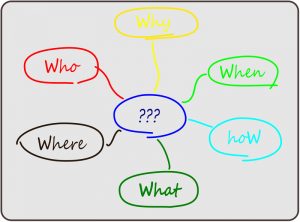Learning to Define the “Problem”
To improve our problem solving skills we need to begin by clearly defining the “problem”. Firstly we must be able to do this ourselves and then coach others in the organisation to do the same.
How often do we hear Production problems in holistic terms, with all elements rolled into one statement – “there are no parts”, “the parts are no good”, “no on here knows what they are doing”. We need to develop our skills in taking these every day whinges and understand the real problem. Only after the real problem has been understood can we even start solving it.
So where to begin in really understanding and defining a problem?
Let’s get some facts by asking questions. If we are trying to understand why “the parts are no good”, we first need to know:
- which parts?
- what part numbers?
- is this the only batch with this problem?
- why are they “no good”?
- which standard don’t they meet?
- are they too big? too small? not the correct surface finish?
- if they are too big, what does the drawing / spec require?
- what is the tolerance on this dimension?
- what is the difference between the drawing and what we have?
Once we have the answers to these question, we need to define our problem in words and facts that summarise all of this information. And those involved in the problem need to agree that this is what the problem actually is. If we can’t agree on the problem, you can bet we won’t agree on the solution as each person will be expecting a different problem to be solved, ensuring the solution won’t even work.
Now that we have clearly defined our “problem” we can begin our root cause analysis, using fishbone diagrams and the 5 why’s, to determine a correct action. Once implemented we can check to see how well this implementation worked. This also helps us to know how well we defined our problem in the first place – if the corrective action didn’t fix the problem we were trying to solve, where did our problem statement let us down? What other variables weren’t considered?
It is only through practice and checking on corrective actions that we have implemented that we can improve our problem solving skills and problem definition.
Deploying real Lean problem solving methods needs everyone to be able to delve into a problems that can be clearly defined and understood by all involved. That is what learning to define a “problem” is all about.





